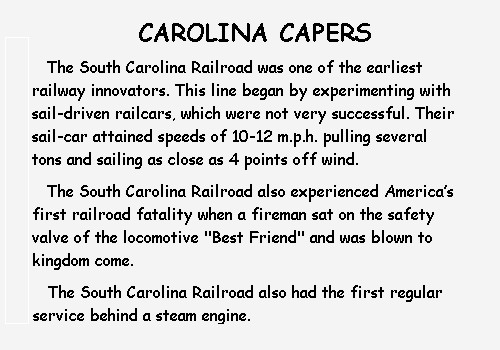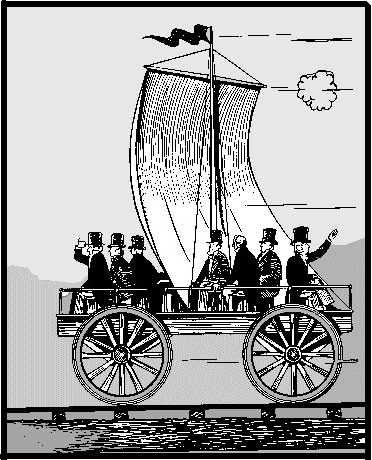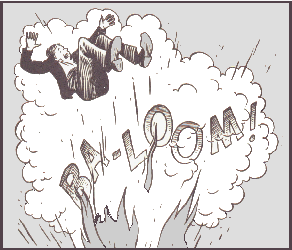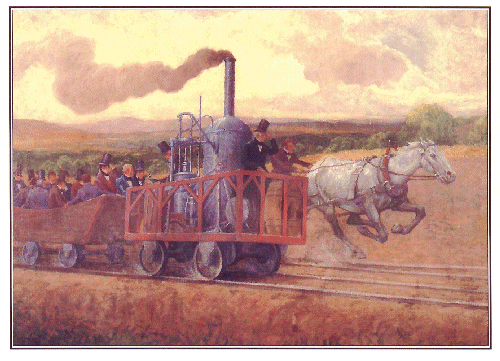| The tiny machine pulled a single boat-shaped car in which the directors
of the Baltimore & Ohio traveled, and the event was staged as a race
with a horse-drawn vehicle, on August 28, 1830.
Tom Thumb did fine on the way out but lost the battle on the return
trip when the belt driving the fan used to draw the fire broke. Even so,
steam won the war because the B&O management decided to become a steam
railroad in the future although as we shall see, vertical-boilered locomotives
were used on their railroad for a considerable time.
Thomas Cooper relates how at the last minute he decided that the natural
draught of his little vertical boiler would not draw the fire sufficiently.
"I screwed a crooked joint on the top of the smoke stack to hold my blower
and carried a belt down over a wheel on the shaft . . . " he told the Master
Mechanics Association in 1875 In the replica there is no sign of the contrivance
attached to the chimney, while the blower is down below on the platform?
The sequel to the run of Tom Thumb was that the B&O directors decided
to set a competition for American manufacturers only, for the best practical
steam locomotive to be decided by trials after the style of those which
Stephenson's Rocket won at Rainhill, England. |






